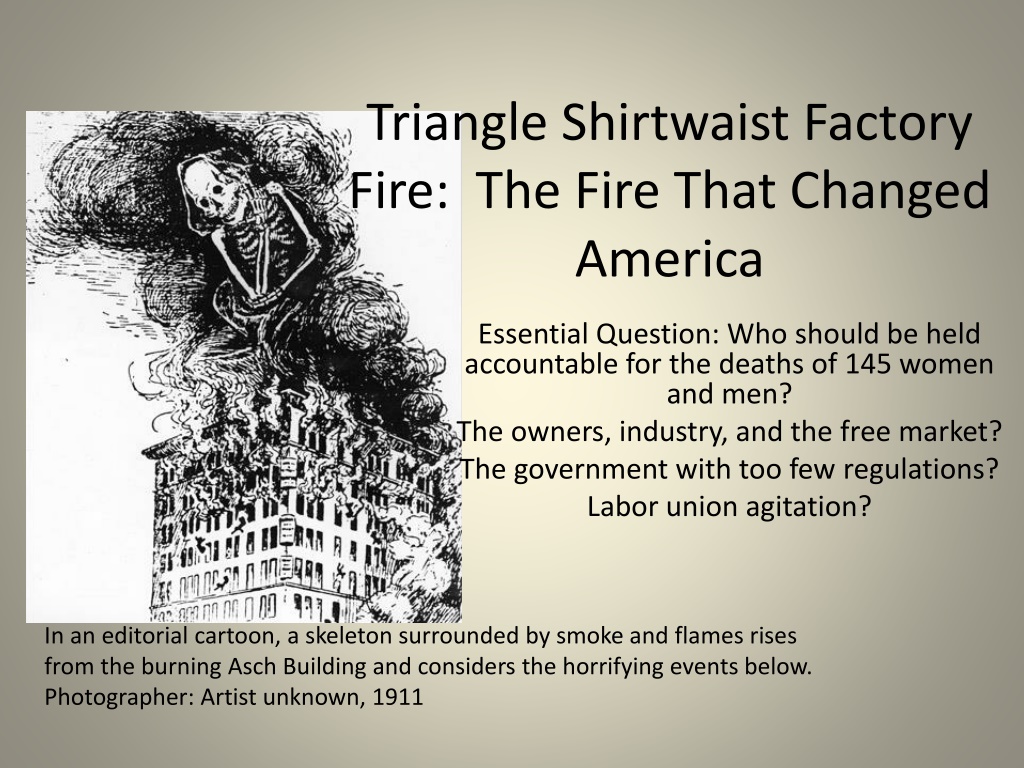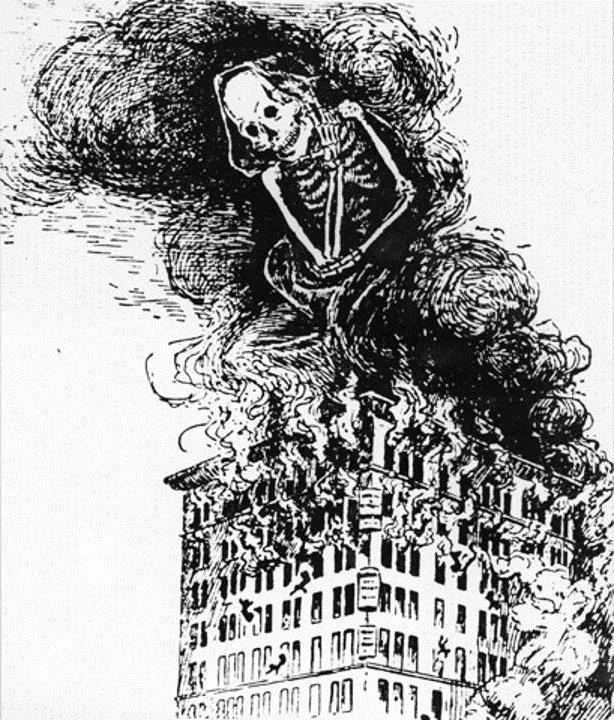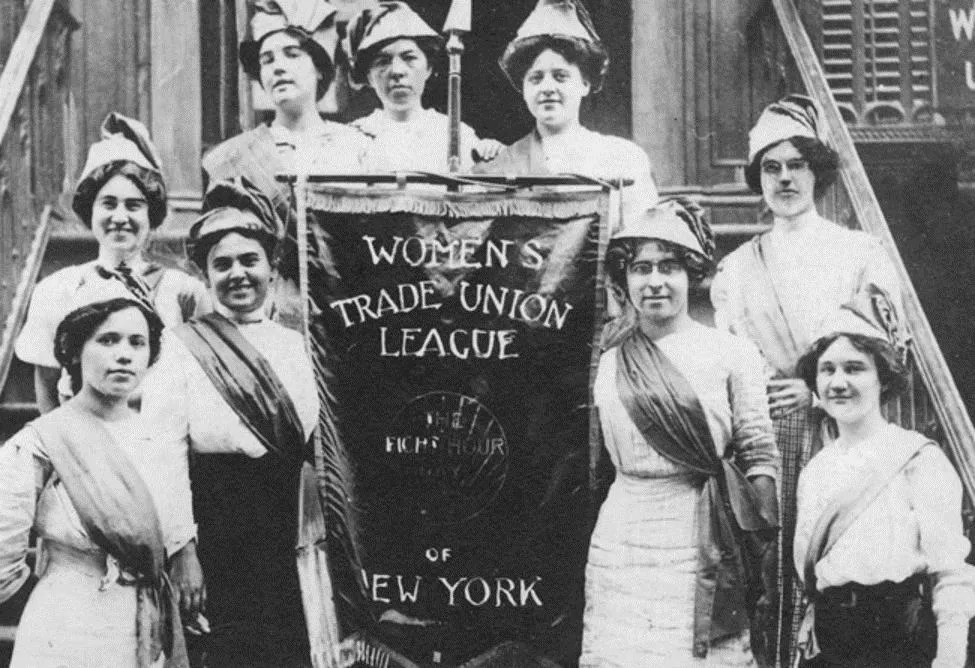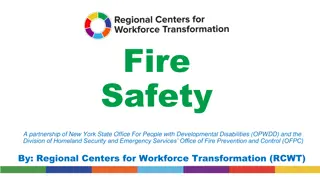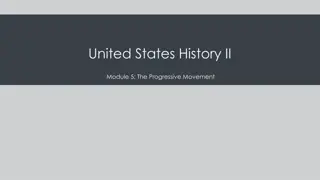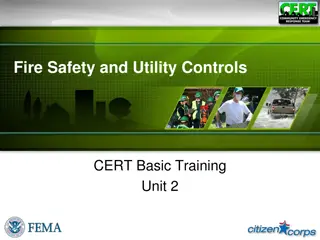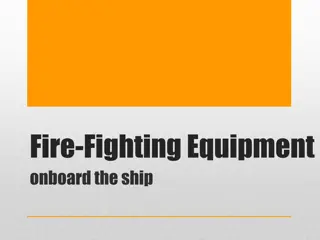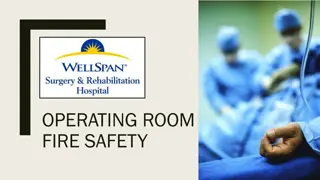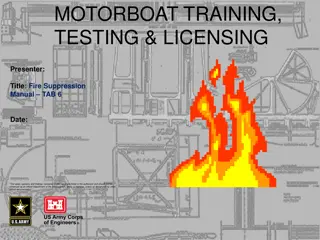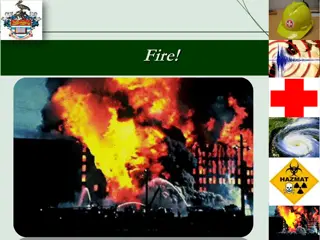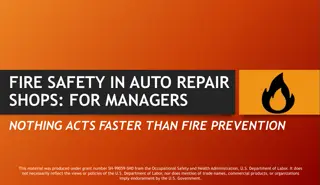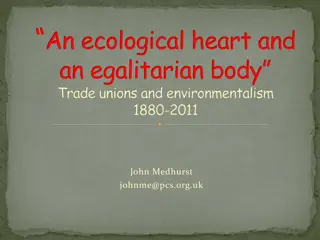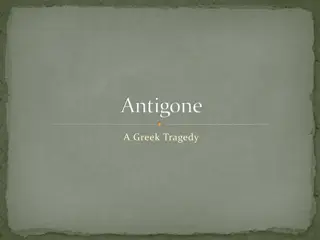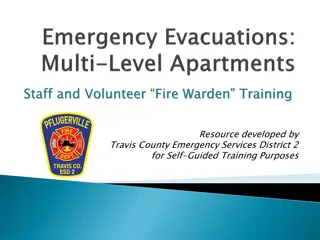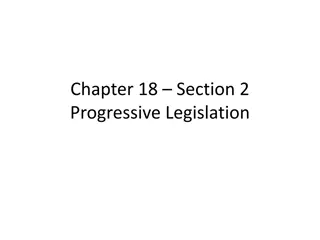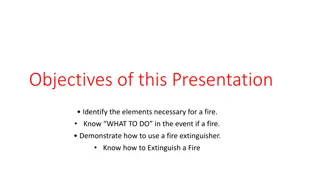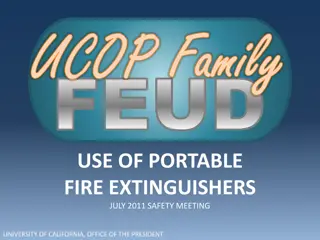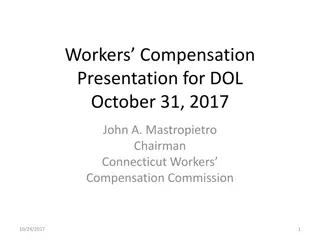Tragedy and Accountability: Triangle Shirtwaist Factory Fire
The Triangle Shirtwaist Factory Fire of 1911 in New York City resulted in the tragic deaths of 145 women and men, sparking a wave of questions about accountability - should the owners, industry, government, or labor unions be held responsible? The images and descriptions depict the harrowing events, inadequate safety measures, and the struggle for justice amidst a backdrop of workplace exploitation and tragedy.
Download Presentation

Please find below an Image/Link to download the presentation.
The content on the website is provided AS IS for your information and personal use only. It may not be sold, licensed, or shared on other websites without obtaining consent from the author. Download presentation by click this link. If you encounter any issues during the download, it is possible that the publisher has removed the file from their server.
E N D
Presentation Transcript
Triangle Shirtwaist Factory Fire: The Fire That Changed America Essential Question: Who should be held accountable for the deaths of 145 women and men? The owners, industry, and the free market? The government with too few regulations? Labor union agitation? In an editorial cartoon, a skeleton surrounded by smoke and flames rises from the burning Asch Building and considers the horrifying events below. Photographer: Artist unknown, 1911
The Womens Trade Union League campaigned for the 8 hour work day, safe working conditions and respect for women at work and in society. Photographer: unknown, ca. 1900
Who is responsible? Who is responsible for the murders of one hundred and forty-five young girls and men in the fire proof fire trap? On whose head rests the blame for the inadequate, antiquated, criminal stairs and single fire escape, made possible because the building was classed as fireproof ? These dead girls cry aloud, not for revenge, but for justice. Their flame- racked bodies demand protection for the thousands of sister toilers who have not yet been sacrificed to fire. Their silent lips call, Who is responsible? Detail of March 28, 1911 New York Evening Journal editorial cartoon. Photographer: Artist TAD [Thomas Aloysius Dorgan], March 28, 1911
NYC Series Triangle Factory Fire Segment The Asch Building on the corner of Greene Street and Washington Place was a new fire-proof building but the blaze on March 25th was not their first. It was also not the only unsafe building where young immigrants worked 6 or 7 days each week.
The 240 employees sewing shirtwaists on the ninth floor had their escape blocked by back-to-back chairs and workbaskets in the aisles. The 75-foot long paired sewing machine tables obstructed essential access to the windows, stairs, and elevators.
Doctors examining each body for signs of life located survivors among those that piled up on the sidewalk and street. Officers gathered personal items including money, pay envelopes, papers, and jewelry for safe keeping and placed numbered tags on victims before taking the dead to the Twenty-sixth Street Pier temporary morgue.
Labor unions, religious communities, political groups and social reform organizations assembled to mourn the lost lives and demand real progress in worker protection. At times their differences in methods and priorities threatened to take back gains made in public awareness and the commitment to act.
This Was News-WPA recounting of the fire Fire fighters and police officers collected jewelry, handbags, money, pay envelopes and other personal objects from victims at the Asch Building and carried them to the 26th Street pier morgue where they were used to help identify the dead. Photographer: unknown, March 25, 1911 Kheel Center image identifier: 5780pb39f16b
Factory Exit Doors New York State Labor Laws (Article 6, Section 80): "All doors leading in or to any such factory shall be constructed as to open outwardly, where practicable, and shall not be locked, bolted, or fastened during working hours." Triangle Shirtwaist Company Compliance: Whether Section 80 was violated was the key issue in the trial of Harris and Blanck. The case turned on whether the ninth floor staircase door on the Washington Place side was locked at the time of trial. The prosecution contended the door was locked and introduced witness who testified that at the time of the fire she tried the door "in and out, all ways" and was unable to open the door. The prosecution also showed that many of the victims of the fire died in front of the door. The prosecution argued that Harris and Blanck kept the door locked, especially near quitting time, to force exiting workers to pass through the only other exit, where they could be inspected if they were suspected of trying to pilfer waistcoats. The defense contended that the door was open, but that the fleeing workers were unable to exit through the door because of fire in the stairwell. The defense introduced a witness who said that on the day of the fire a key was tied to the lock with the string and that she used the key to open the door. (The prosecution claimed the witness lied.) It was also shown that the ninth floor staircase door did not "open outwardly," but inspectors failed to note a violation because only the width of a stair separated the door from the stairs, making it not "practicable" for the door to open outwardly.
Staircases New York Law: Buildings with more than 2,500 square feet per floor--but less than 5,000 square feet per floor--require two staircases. Each additional 5,000 square feet per floor requires an additional staircase. Triangle Shirtwaist Company Compliance: The Triangle Shirtwaist Company floors had 10,000 square feet of space. Any additional floor space would have required a third staircase. As it was, two staircases--the number the Triangle factory had--sufficed. Fire Escapes New York Law: New York law left the matter of fire escapes to the discretion of building inspectors. The building inspector for the Asch building insisted that the fire escape proposed for the building "must lead down to something more substantial than a skylight." (The architect's plans showed a rear fire escape leading to a skylight.) Triangle Shirtwaist Company Compliance: The Asch building architect promised "the fire escape will lead to the yard and an additional balcony will be put in." In the final construction, however, the fire escape still ended at a second floor skylight. During the fire, the fire escape collapsed under the weight of the fleeing workers.
Non-Wood Surfaces New York Law: Buildings over 150 feet high must have metal trim, metal window frames, and stone or concrete floors. Buildings under 150 feet high have no such requirements. Triangle Shirtwaist Company Compliance: The ten-story Asch building was 135 feet high. If it had one more floor, it would have required non-wood surfaces. Sprinklers New York Law: In 1911, sprinklers were still not required in New York City buildings. Triangle Shirtwaist Company Compliance: The Asch building contained no sprinkler system. Fire Drills New York Law: Fire drills were not required to be conducted. Triangle Shirtwaist Company Compliance: The Triangle Shirtwaist Company never conducted a fire drill.
Documents to consider Ladies' Garment Worker, April 1911, monthly publication for members of the International Ladies Garment Workers Union Stories of Survivors. And Witnesses and Rescuers Outside Tell What They Saw New York Times, March 26, 1911 Letter to Wm From Charles Willis Thompson (Weekend news editor NY Times) From the Charles Willis Thompson Letters, Rare and Manuscript Collections, Cornell University Library, Ithaca, NY April 14, 1911 Hostile Employers See Yourselves as Others Know You American Federationist, May 1911. pp. 356-361.(Excerpt) by Samuel Gompers Blame Shifted On All Sides For Fire Horror New York Times, March 28, 1911, p. 1. Copies of NY laws and the Triangle Factory compliance record
Essential Question: Who should be held accountable for the deaths of 145 women and men? The owners, industry, and the free market? The government with too few regulations? Labor union agitation?
The owners, industry, the free market? In an editorial cartoon, a man wearing clothing made of money leans against the factory door which is locked with a dollar sign key, while women die in smoke and flames on the other side of the door. Photographer: Artist name illegible, 1911
The government with too few regulations? Inspector Of Buildings! Record fire for New York, 145 lives lost!!!! Building Fire Proof, Only Fire Escape Collapses. O.K. Inspector. An editorial cartoon shows a skeletal building inspector with a grim smile approving conditions at the Asch Building. Photographer: Artist Robert Carter, 1911
Labor union agitation? Song: The Uprising of the Twenty Thousand Dedicated to the Waistmakers of 1909 In the black of the winter of nineteen nine, When we froze and bled on the picket line, We showed the world that women could fight And we rose and won with women's might. Chorus: Hail the waistmakers of nineteen nine, Making their stand on the picket line, Breaking the power of those who reign, Pointing the way, smashing the chain. And we gave new courage to the men Who carried on in nineteen ten And shoulder to shoulder we'll win through, Led by the I.L.G.W.U. The shirtwaist strike ended February 15, 1910. In September of the same year, Louis Brandeis mediated an agreement between factory owners and union leaders. Known as the Protocol of Peace, it attempted to reduce conflict between garment factory owners and the International Ladies' Garment Workers' Union, providing mechanisms to address worker grievances and promote arbitration. Photographer: Artist LOLA [Leon Israel], 1910
My Little Shirtwaist Fire My Little Shirtwaist Fire By Rasputina Once it started, The frail and fainthearted Just withered to the floor. Oh so sadly We examined hands burned badly By that which no man fears more- The terrible flames of All that remains of My Little Shirtwaist Fire. My best friend was Alone in the alcove, Does anyone see her there? Such a sweet face, trapped in the staircase By the smell of her own burning hair and the Terrible flames of All that remains of My Little Shirtwaist Fire. Glow baby glow as the embers they died there, Nobody knows what we saw inside there. Twisting and burning, the girls' fine young bodies Yes, we're burning can you help us please? Yes, we're begging, we're on bended knees Oh, my Little Shirtwaist Fire. Girls work hard for Small rewards or Invitations to dine Or one kind word from One who loves them but What I have earned is mine- The terrible flames of all that remains of My Little Shirtwaist Fire. Band: Rasputina Album: Thanks for the Ether Song: My Little Shirtwaist Fire Date: 1996 Label: Sony Rasputina Audio
Speaking for Ourselves "Speaking For Ourselves" by Amy Goodman and Kathy Dobie, WNYC, March 28, 1987 Courtesy of the WNYC Archives Total running time: 12:39 A discussion of the Triangle fire includes remarks by 94 year old Triangle fire survivor Pauline Pepe made during the 1985 commemoration of that tragedy. Also speaking were New York City Fire Commissioner Joseph Spinnato who remarked on the fire in the Schomburg Plaza, a Harlem high rise, that killed 7 people the previous Sunday, Triangle Fire author Leon Stein, and New York State Assembly member Frank Barbaro, among others. Pauline Pepe
Homework You have: Seen video and still images Heard sound clips Read eyewitness accounts Reviewed NY laws. Now: Write two paragraphs which could be used in a textbook to teach about the Triangle Factory Fire. One paragraph should focus on the details of the incident while the other focuses on the outcome of the trial and the long term consequences for the United States.
